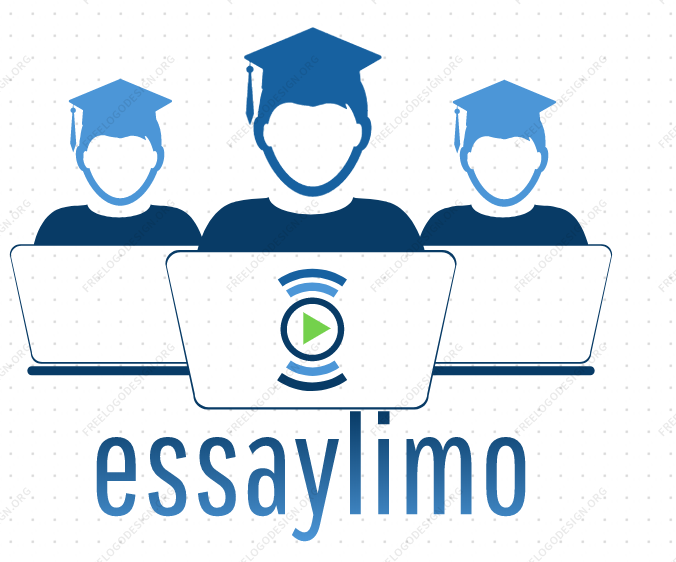Make sure that you answer each question with explain one sentencemake sure to follow the directions
research_quali.pdf
guidness_for_qualitive.doc
Unformatted Attachment Preview
495996
research-article2013
SGOXXX10.1177/2158244013484914SAGE OpenSwicord et al.
Article
“Just What I Need”: Gifted Students’
Perceptions of One Online Learning
System
SAGE Open
April-June 2013: 1–10
© The Author(s) 2013
DOI: 10.1177/2158244013484914
sgo.sagepub.com
Barbara Swicord1, Jaclyn M. Chancey2
and Micah N. Bruce-Davis2
Abstract
Little research exists on the nature of the interactions between gifted students and technology, specifically the phenomenon
of gifted adolescents using Internet-based learning tools. This qualitative study explores how students use the Renzulli
Learning System (RLS), an online educational profile with a matching database that provides enrichment resources. The
student sample included nine identified gifted and talented seventh- and eighth-grade students in an urban school district
in Connecticut. Most of the students had been using RLS for about 2 years. The students participated in an electronic
questionnaire and were interviewed during two semistructured interviews. The research questions were centered on how
the students were using RLS at school. Student answers suggested several themes regarding the effectiveness of RLS as a tool
for school success, its engaging quality, and selective independence.
Keywords
Renzulli, gifted, adolescent, online
Although the need for differentiated educational experiences
for gifted students is well documented (e.g., Renzulli &
Smith, 1979; Robinson, 1990; Tomlinson, 1997; VanTasselBaska & Stambaugh, 2005), evidence indicates that differentiation is inconsistently implemented (Archambault et al.,
1993; Moon, Tomlinson, & Callahan, 1995; VanTasselBaska & Stambaugh, 2005). Teachers who wish to differentiate curriculum for high ability learners face barriers such as
the lack of planning time, the need to modify curriculum, and
the lack of training in meeting the academic needs of gifted
students. (Tomlinson, 1994, 1999; VanTassel-Baska &
Stambaugh, 2005; Westberg, Archambault, Dobyns, &
Salvin, 1993). Online tools have the potential to address
these barriers, enabling students of all ability levels and age
levels to find content that can challenge them at appropriate
levels. Classroom technology use has been linked to educational outcomes (Azzam, 2006; Bain & Ross, 2000; R.
Cradler & Cradler, 1999; J. Cradler, McNabb, Freeman, &
Burchett, 2002), but there has been almost no research on the
use of specific technology tools with gifted students.
The Renzulli Learning System (RLS) is an interactive
online program that matches student interests, learning
styles, and expression styles with a wide array of educational activities and resources that are designed to enrich
students’ learning processes. Students using RLS have
opportunities to explore, discover, learn, and create using
current technology resources independently and in a prescreened web environment. This qualitative study describes
the use of RLS from the perspectives of gifted and talented
students who use the system to complete school projects.
This study may help to describe the efforts necessary to
increase gifted students’ engagement at school through
online learning, to assist educators in planning for these students, and in better understanding how these students like to
learn and prefer to work at school.
Literature Review
There is no single definition of giftedness or gifted learners.
The field of gifted education generally presents the belief
that gifted individuals are those who have abilities in one or
more domains that are sufficiently advanced as to require
modifications in educational settings established for average
students. For example, the federal definition of giftedness
1
National Society for the Gifted and Talented, Stamford, CT, USA
University of Connecticut, Storrs, USA
2
Corresponding Author:
Barbara Swicord, National Society for the Gifted and Talented,
Summer Institute for the Gifted, River Plaza, 9 West Broad Street,
Stamford, CT 06902-3788, USA.
Email: bswicord@giftedstudy.org
2
specifies a wide range of domains in which students could
demonstrate high levels of talent or show the potential for
such talent (U.S. Department of Education, 1993). While
earlier definitions of giftedness were based almost exclusively on a general intelligence factor, often defined by IQ
(Galton, 1962; Terman, 1926), newer conceptions expand
that definition to other abilities and measures (e.g., Borland,
2003; Borland & Wright, 1994; Ford, 1998; Frasier et al.,
1995).
For the purpose of this study, another expanded operational definition of giftedness is used. Renzulli (1978)
defined gifted behaviors as the result of above-average ability, high levels of task commitment, and high levels of creativity combined and applied to any potentially valuable area
of human performance. Under this definition, gifted learners
are those who have the potential to demonstrate gifted behaviors in one or more areas, and the goal of gifted education
programs is to develop such behaviors. This is also the definition of giftedness underpinning the RLS.
Meeting the Academic Needs of Gifted Learners
Exceptionally capable students exhibit characteristics that
challenge the efficacy of the traditional American educational system (Karnes & Bean, 2001; Plucker & Callahan,
2008; Renzulli, Gubbins, McMillen, Eckert, & Little, 2009).
Those that demonstrate advanced ability in one or more academic areas may be poorly served by age-based placement
(Davis, 2006; Horowitz, Subotnik, & Matthews, 2009;
Tomlinson, 1999), and asynchronous development of abilities may pose difficulties for strictly acceleration-based services (Karnes & Bean, 2001; Kearney, 1996). Gifted students
may also differ from their peers in their preferred thinking
styles (Sternberg & Grigorenko, 1993) and in their ability to
make intuitive conceptual connections (Sak, 2004). The
Council for Exceptional Children (2002) stated that, to serve
gifted students appropriately, teachers should match their
instructional strategies to the specific learning needs of the
students and that the students should receive an appropriately differentiated curriculum or have access to the full
range of curriculum (through distance education, acceleration, or other specially designed programs).
There is disagreement within the field of gifted education
as to what would constitute the best curriculum and instruction for gifted students (e.g., Borland, 2003; Renzulli et al.,
2009). VanTassel-Baska and Brown (2007) identified six
curricular models that showed some evidence of being effective with gifted learners. These models generally involved
inquiry-based learning within academic disciplines or fields.
The Schoolwide Enrichment Model (SEM; Renzulli & Reis,
1997), which is based on Renzulli’s (1978) definition of giftedness and in turn is the foundation for the design of RLS,
was one of the models with the longest history of use and
research. In the SEM, a talent pool of students with the
potential for gifted behaviors is identified through a variety
SAGE Open
of measures (Renzulli, Reis, & Smith, 1981). Identified students are then eligible for a continuum of services, including
differentiation based on assessed interests and learning
styles. Curriculum compacting also is used to eliminate
instruction in material already mastered and allows for substitute alternative learning activities (Reis, Burns, & Renzulli,
1992; Renzulli & Smith, 1979). A major goal of SEM is for
identified students to complete Type III projects: investigative activities and artistic productions in which the learner
assumes the role of a firsthand inquirer: thinking, feeling,
and acting like a practicing professional, with involvement
pursued at a level as advanced or professional as possible
(Renzulli, 1977). Research on the SEM has demonstrated
improved teacher attitudes toward student work as well as
long-term effects of Type III projects on students’ later career
choices and productivity (Delcourt, 1994; Hébert, 1993;
VanTassel-Baska & Brown, 2007).
Barriers to Differentiation in the Regular
Classroom
Although there is a general consensus in the gifted education
literature that some form of differentiation is necessary to
meet gifted students’ learning needs (Council for Exceptional
Children, 2002; Kearney, 1996; Levande, 1999; Renzulli &
Smith, 1979; Robinson, 1990; Tomlinson, 1994, 1997;
VanTassel-Baska & Stambaugh, 2005), and teachers may
agree that addressing academic differences is important for
success (Hootstein, 1998), differentiation has not been
implemented consistently. Researchers at the National
Research Center on the Gifted and Talented studied the
extent to which gifted students received differentiated
instruction in regular classrooms in the United States
(Archambault et al., 1993) and found that third- and fourthgrade teachers made only minor modifications in the regular
curriculum to meet the needs of the gifted students, regardless of whether they taught in public or private schools or the
location and ethnic diversity of the school. Moon et al. (1995)
found that 50% of the teachers they surveyed did not differentiate instruction. VanTassel-Baska and Stambaugh (2005)
noted that the pattern of research findings stayed consistent
for over a decade. As a result, gifted students are often not
challenged in the classroom (Tomlinson, 1997), and they
often spend much of the day tutoring others in cooperative
learning groups or reviewing curriculum that they mastered
years ago on their own (Robinson, 1990; U.S. Department of
Education, 1993).
Several reasons for the lack of differentiation for gifted
students have been identified. Structural reasons include too
little planning time, lack of administrative support, large
class sizes, and pressure to focus on low-achieving students
(National Association for Gifted Children, n.d.; Tomlinson,
1994, 1999; VanTassel-Baska & Stambaugh, 2005). Teachers
may be unclear about their professed beliefs regarding individual differences, perceive no need to differentiate for
3
Swicord et al.
advanced learners, or even hold negative attitudes toward
gifted students (Borland, 1978; Knapp, 2012; Lortie, 1975;
Moon et al., 1995; Robinson, 1990; VanTassel-Baska &
Stambaugh, 2005; Winner, 1996). Finally, there are obstacles
related to teacher knowledge and skills. Teachers may receive
very little training in the needs of gifted students, be unable
to manage effectively a differentiated classroom, have insufficient subject matter knowledge for in-depth explorations,
or be uncomfortable modifying a predesigned curriculum
(Stigler & Hiebert, 1999; Tomlinson, 1994, 1999; VanTasselBaska & Stambaugh, 2005; Westberg et al., 1993). Some of
these obstacles may be addressed through professional
development (Hultgren & Seeley, 1982; Reis & Westberg,
1994; Reis et al., 1993), but others could benefit from making additional tools available to teachers.
Meeting Gifted Learners’ Needs Through
Technology
Individualized learning via the Internet holds promise as students pursue study based on interests and skills rather than
on age (Anderson, 2004; J. Cradler et al., 2002; Field, 2009;
Leu, Leu, & Coiro, 2004; Renzulli & Reis, 2007; Sheffield,
2007). Students already use the Internet and other technology for a variety of purposes. In 2005, children ages 8 to 18
typically spent approximately 8.5 hr each day using media;
2 hr of that time was spent using multiple media and more
than 1 hr was spent using a computer (Roberts, Foehr, &
Rideout, 2005). Furthermore, a 2005 Pew Study reported
that 87% of adolescents aged 12 to 17 used the Internet, and
half of those used it daily (Lenhart, Hitlin, & Madden, 2005).
Students who use the Internet at home are frustrated because
they cannot use technology how, when, and where they want
in their classes (Project Tomorrow, 2006), and they believe
that technology can enrich their learning experience (Lenhart
et al., 2005; Project Tomorrow, 2006; Sheffield, 2007).
Schools’ technology infrastructure is also growing. By June
of 2000, more than 95% of U.S. schools and 72% of classrooms had access to online Internet technology (CEO Forum
on Education & Technology, 2000). According to Azzam
(2006), more than half of teachers use technology in their
classroom instruction.
Research has linked technology and educational attainment in U.S. classrooms. For example, Bain and Ross (2000)
found that careful alignment between content-area learning
standards and carefully selected technology can significantly
increase student achievement scores. When evaluating the
results of a school system’s technology grant, R. Cradler and
Cradler (1999) reported that teachers observed significant
changes in their students’ skills and knowledge acquisition
upon completion of their first multimedia project. In a follow-up study, “teachers reported increased student knowledge in: research skills; ability to apply learning toward
real- world situations; organizational skills; and interest in
content” (J. Cradler et al., 2002, p. 47), suggesting that
engagement in technology results in positive gains, measurable and assumed. However, little research has explicitly
focused on gifted students’ learning through technology.
Anderson (2004) identified four capacities of online media
that are important to gifted students in that they allow gifted
students to have autonomy in their learning: flexibility of
time and place of learning, vast quantities of content, varied
formats of content, and rich contexts of synchronous and
asynchronous communication. This study explores gifted
students’ use of a particular online system (RLS) that possesses these capacities and addresses some of the barriers to
differentiation listed in the previous section.
Method
In this study, qualitative procedures were used to investigate
the phenomenon of engagement in gifted adolescents. The
focus of this basic, interpretative qualitative study was developing an understanding of students’ interpretations of working with RLS and the meaning that “attributed to their
experiences” (Merriam, 2009, p. 23) with RLS. The information gathered from the students enabled a first step to understanding how students engage and react to participation in an
online learning system.
The central question of this study was related to gifted
adolescent students and their engagement with an online
enrichment program called the RLS. The following research
questions guided this study:
Research Question 1: How are the selected adolescents
using RLS?
Research Question 2: What are the perceived effects of
using RLS on school behaviors?
Nine middle school students in Grades 7 and 8 were
selected to participate in this study. These students attended
a public school in an urban district in Connecticut, had been
identified for the school district’s gifted program, and were
currently using RLS. The students’ gifted teacher selected
the students based on a set of researcher-created criteria,
including usage of RLS, participation in the gifted program,
and exhibiting a range of school behaviors indicative of
engagement in the regular core curriculum.
The selected public school system has about 23,000 students, one of the largest school systems in Connecticut. The
per capita income for this district was US$16,306 in 2000. In
2005-2006, more than 95% of the students were eligible for
free or reduced lunch, as compared with the state average of
26.9%. The district is diverse in race and ethnicity with a
90% minority rate in 2005-2006, and this district is far below
the state average on Connecticut’s Mastery Test. The K-8
school visited in this study is in the largest city in the state
with a population of 140,000. The gifted program occupies a
room in a trailer behind the school, along with two other
classrooms.
4
SAGE Open
Table 1. Participants’ Demographics.
Alias
Ethnicity
Gender
Rahul
Mark
Cindy
Alicia
Jamil
Dari
Hayley
Cheryl
Naomi
Black
Black
Black
Hispanic
Black
Black
White
Black
Black
Male
Male
Female
Female
Male
Female
Female
Female
Female
Grade
Age
8
8
8
8
7
7
7
7
7
14
13
13
13
13
13
12
13
13
The students were identified for the gifted program on the
basis of teacher recommendation, academic and effort
grades, Connecticut Mastery Test scores, and online quarterly assessments. Students met as a team with the gifted program teacher 1 day per week and attended regular classes the
remaining 4 days per week. Transportation to one of the two
schools with gifted programs was provided for all of the district’s identified students. A child was required to meet academic and behavioral standards to remain in the gifted
program.
Students involved in the study ranged in age from 12 to
14 (four eighth graders and five seventh graders). Of the
nine students, three were male and six were female. Among
the eighth graders, the genders were evenly split. There
were four females and one male in the seventh-grade group.
(see Table 1.)
RLS
The RLS was designed to assist teachers with differentiating
or individualizing assignments for students based on interests, learning styles, and expression styles. The program
focuses on understanding what each student’s interests,
learning styles, and expression styles are and then providing
a list of thousands of activities and assignments that the student can engage in that reflect the student’s individual needs
and preferences. The program is student centered and focuses
on the development of a product. When students first log in
to RLS, they are given a questionnaire that identifies the students’ top 3 interests, top 3 learning styles, and top 3 expression styles. Based on that information, a profile is developed
and a list of educational resources (from over 400,000
screened resources) is populated to match each student’s profile. Teachers can then guide students through self-directed
learning projects or assignments utilizing sources from the
student’s personalized list of educational resources.
Data Collection
Data was collected through an online questionnaire and indepth interviews with selected students, using a semistructured
protocol. Each participant completed an electronic questionnaire (Appendix A) before being interviewed. The
responses to the questionnaire helped the first author assess
the appropriateness of the interview questions, and provided primary data directly from the hands of the participants. An interview then was conducted in school during 1
week, and subsequent interviews were conducted within 2
weeks following the first interviews. Student quotes used
in this discussion derive from the interviews.
The first interview (Appendix B) established a base for
understanding and established trust. The second interview
enabled elaboration of comments and questions addressed in
the first interview and sought the participants’ checks on the
first interview through specific questions (i.e., What did you
mean when you said . . .?”). The interviews, lasting from
30 min to 45 min were taped and transcribed as soon as possible following the interview. The first author took notes on
the students’ responses in addition to relying on the tapes.
The interviews took place in an empty classroom in the
school. The first author continuously rephrased the students’
responses and asked if she was conveying the meaning that
they intended. All students agreed that the rephrasing was
accurate, indicating that the researcher had accurately interpreted their answers.
Data Analysis
When reviewing the data gathered in answer to the research
questions, the first author noted recurring themes that
emerged. The initial open codes were developed based on
participant responses to the questionnaires, and to notes
from the interviews (Creswell, 2007). Once the interviews
were transcribed, the first author indicated which text segments represented the open codes. After an analysis of all
the transcribed interviews t …
Purchase answer to see full
attachment






Recent Comments